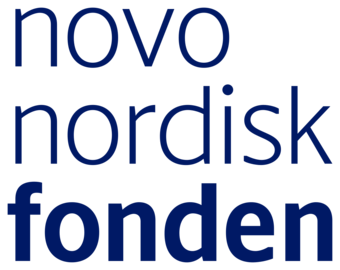Univ.-Prof. Dr. Javier Martinez

We study the enzymes that execute and regulate the nuclear splicing of pre-tRNAs and the cytoplasmic splicing of the Xbp1-mRNA during the unfolded protein response. We combine biochemistry – our main expertise – with cellular and structural biology, the latter through collaborations. At IMBA we identified the RNA 5’-OH kinase CLP1 and the tRNA ligase complex (tRNA-LC), in charge of joining tRNA exon halves during pre-tRNA splicing together with its cofactor Archease. At the Max Perutz Labs we identified ANGEL2, the first 2',3'-cyclic phosphatase in human cells. We adventured into neurobiology together with Josef Penninger, reporting the role of CLP1 in motor neurons (Hanada et al, 2013) and in Pontocerebellar hypoplasia (PCH) (Karaca et al, 2014). More recently, we explored PCH together with Simon Trowitzsch (Goethe Univ. Frankfurt) by characterizing mutations in the pre-tRNA splicing endonuclease (TSEN) complex both at the biochemical, structural, and functional levels.
Focal points of interest
We aim to dissect the function of the tRNA-LC and RTCA – RNA 3’ Phosphate Cyclase, converting 3’ phosphates into 2’,3’-cyclic phosphates at the end of still elusive RNAs – within dendritic RNA-transporting granules. RNA-transporting granules are mobilized by microtubule-dependent molecular motors such as KIF5A, KIF5B and KIF5C, members of the kinesin-1 family of proteins. KIF5A is unique in that it is specific to neurons. It has been shown that KIF5A conditional brain knockout mice develop epileptic seizures, known to be triggered by the disturbance of inhibitory synaptic transmission, suggesting that GABAergic synaptic transmission could be impaired. Further experiments revealed a substantial decrease in the number of GABAA receptors at the surface of neurons, explained by trafficking defects towards the membrane. KIF5A also mobilize the GABAA receptor-associated protein, GABARAP. In addition, KIF5A null human motor neurons show defects in the anterograde transport of SFPQ-associated RNA granules in DIV42 motor neuron axons. To round up our hypothesis and focus, Nobutaka Hirokawa’s laboratory (Kanai et al, 2004) had shown SFPQ to co-exist in granules with a set of proteins that at that time were catalogued as “hypothetical proteins”. Now we know that those include the entire tRNA-LC and RTCA. In summary, the subcellular transport of the tRNA-LC and RTCA is driven by KIF5A, which is specific to neurons that express the GABAA receptor at the surface.
Technical proficiency and instrumentation
To investigate the function and dynamics of RNA processing factors in mammalian cells, we have developed expertise in the generation of cells lines stably expressing flagged versions of proteins of interest, immunoprecipitation, subcellular fractionation, microscopy, as well as CRISPR-mediated knockouts, degron-based depletion and mouse models. Expertise in applying these techniques into neurobiology will be provided by “Excellent Brains” and daily by Asst. Prof. Erinc Hallacli, an outstanding neuro/RNA biologist that recently joined the Max Perutz Labs. Erinc has been using iNeurons (NGN2 driven) to investigate RNA granules in synucleinopathy models. He is geared to employ dopaminergic neurons, GABA neurons and glial cells derived from iPS cells along with accelerated aging tools. Synergy between our labs will be achieved not only by complementary technical expertise but also through our shared interest in RNA metabolism in healthy and diseased neurons.
Aspirations for the next 5 years
We aim to reveal the function of the tRNA-LC and RTCA within dendritic RNA-transporting granules in GABAergic neurons, both in health and disease and upon conditions that are known to affect pathways regulated by those enzymes, such as oxidative stress. Our results point to different isoforms of the tRNA-LC in the nucleus to drive pre-tRNA splicing, and in the cytoplasm to assist UPR. Which isoform resides in RNA-transporting granules and why? What are the substrates of RTCA and tRNA-LC?
References
- Hanada T, Weitzer S, Mair B, Bernreuther C, Wainger BJ, Ichida J, Hanada R, Orthofer M, Cronin SJ, Komnenovic V et al (2013). CLP1 links tRNA metabolism to progressive motor-neuron loss. Nature 495: 474-480
- Kanai Y, Dohmae N, Hirokawa N (2004). Kinesin transports RNA: isolation and characterization of an RNA-transporting granule. Neuron 43: 513-525
- Karaca E, Weitzer S, Pehlivan D, Shiraishi H, Gogakos T, Hanada T, Jhangiani SN, Wiszniewski W, Withers M, Campbell IM et al (2014). Human CLP1 mutations alter tRNA biogenesis, affecting both peripheral and central nervous system function. Cell 157: 636-650





